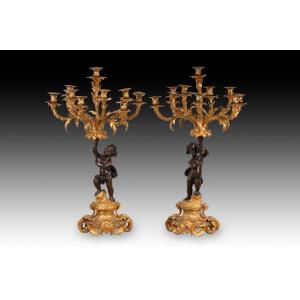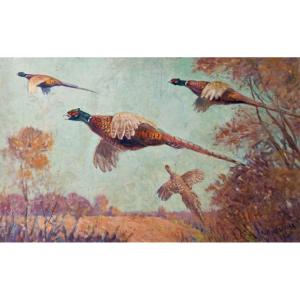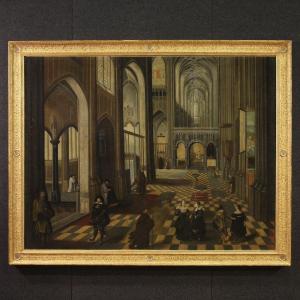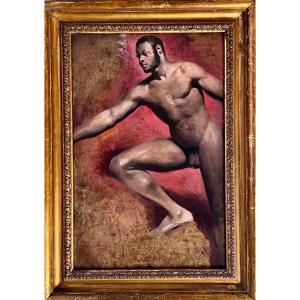Oil on canvas depicting a scene from classical mythology in a natural landscape with leafy trees and a fragment of pyramid-shaped ruins in the background. Note (from her clothing) that the female figure mounted on a white bull in the left group is the same one who appears receding on the animal on the right and, again, in the water, in the background of the composition. Europa was a Phoenician princess who was abducted by Zeus: the god transformed himself into a white bull and mingled with the cattle owned by the girl's father. The girl caught sight of him while she was picking flowers with her entourage of ladies and, when she saw the bull, she approached the animal. After checking that he was tamed, she found herself on his back, and Zeus took the opportunity to take her on his back to Crete, sinking into the sea. Paolo Caliari or Cagliari, better known as Paolo Veronese or Veronese, is a very important painter of Venetian Mannerism. He treated the same theme with a very similar composition in a canvas painted in 1573 and kept in the Antecollegia of the Doge's Palace in Venice, and in another canvas dated between 1580 and 1585 which is in the Capitoline Museum in Rome. The present work is clearly inspired by the second painting mentioned, since it was a frequent source of inspiration for many painters and, in particular, for Spanish scholarship holders in Rome (the Royal Academy of Fine Arts of San Fernando in Madrid preserves another Rape of Europa inspired by the same work by Veronese, but this one was made by Alejandro de la Cruz, a student of Mengs who received a scholarship in 1765 from the Academy of Rome). -
Dimensions: 191x7x158 cms. 167x134 cm










































 Le Magazine de PROANTIC
Le Magazine de PROANTIC TRÉSORS Magazine
TRÉSORS Magazine Rivista Artiquariato
Rivista Artiquariato